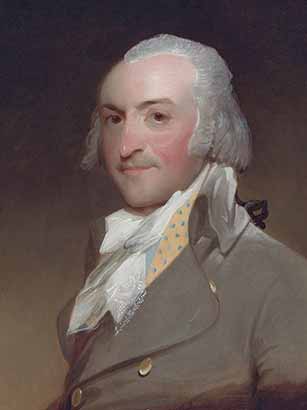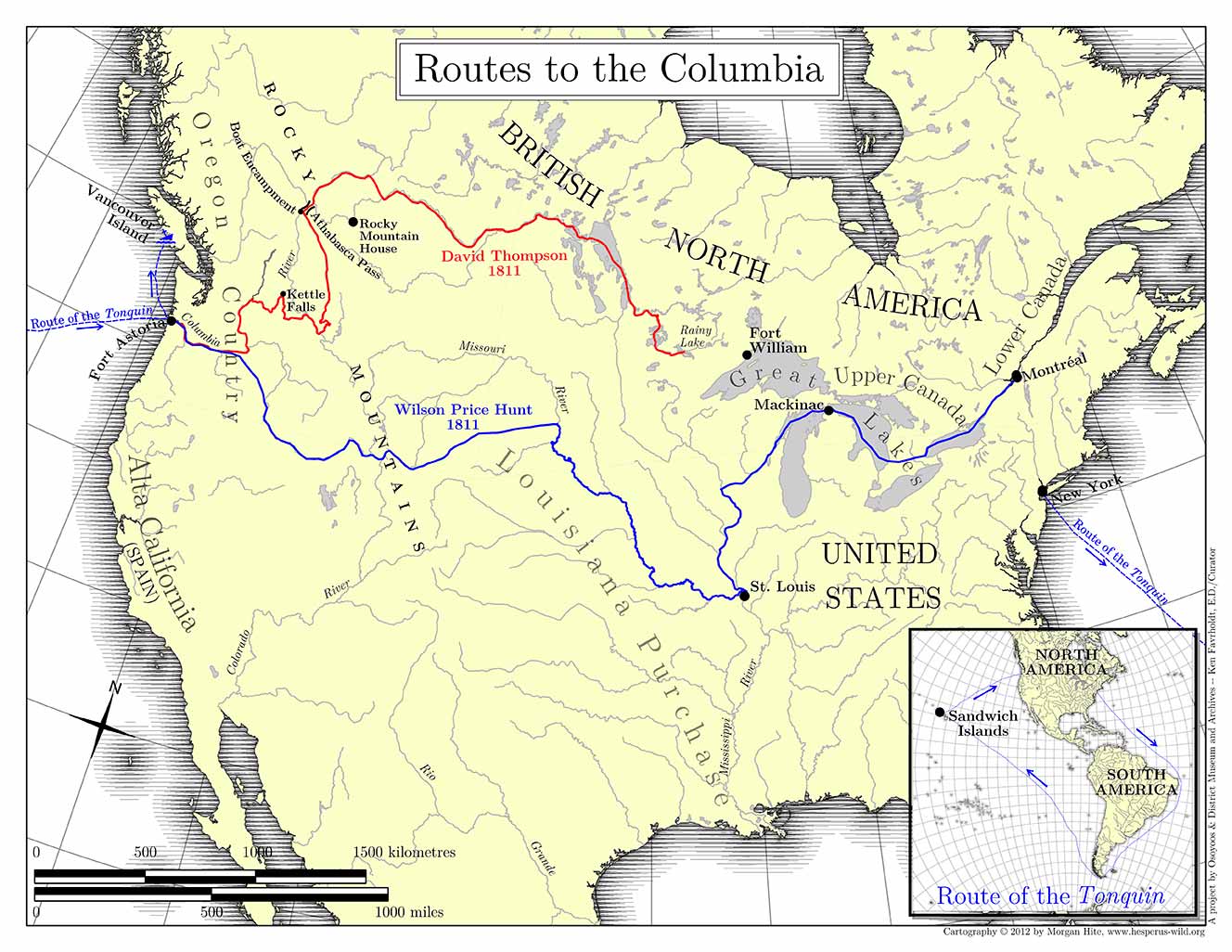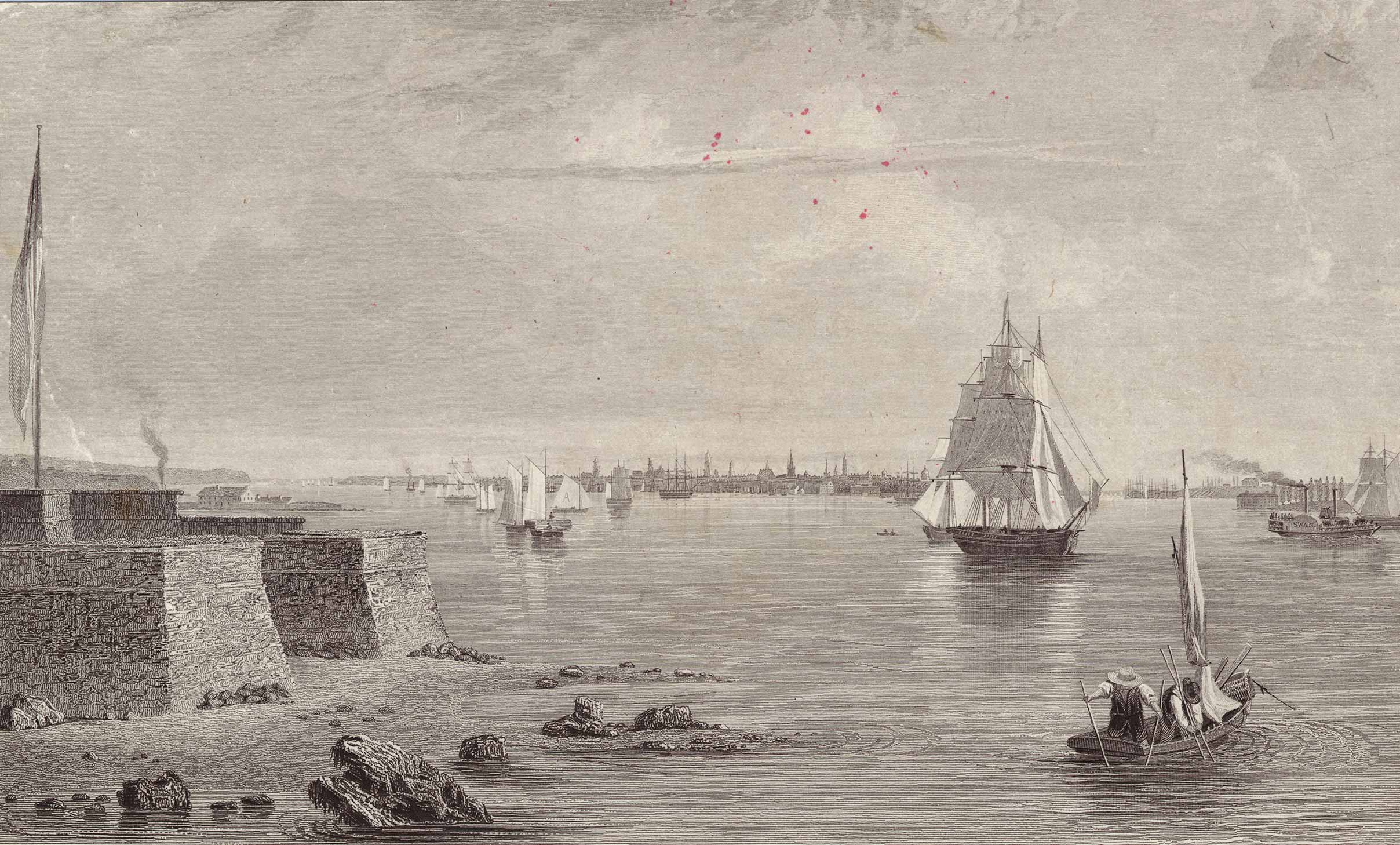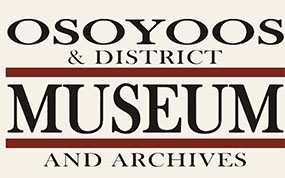Before the War
Astor Founds the Pacific Fur Company
Two years before the War of 1812, American millionaire merchant John Jacob Astor would start a project that would have an impact on the history and geography of Canada and the United States.
Astor, born in Waldorf, Germany in 1763, emigrated to the United States in 1784 and got involved in the fur trade. He started a fur goods shop in New York City. Astor made a contract with the British North West Company (NWC) of Montréal and imported furs to New York.
By 1800 he began trading to China, eventually establishing the American Fur Company (AFC) in 1808.
By 1810 Astor had more grandiose plans. He returned to Montréal to hire employees away from the NWC for his new company.
On June 23, 1810, together with several partners (Duncan McDougall, Donald McKenzie, Alexander MacKay, Wilson Price Hunt, and cousins Robert and David Stuart), he founded a subsidiary of the AFC, called the Pacific Fur Company (PFC).
Astor’s plan was to establish a series of fur trade posts from east to west across North America. The Pacific headquarters would be at the mouth of the Columbia River, where explorers Lewis and Clark had established nearby Fort Clatsop five years earlier.

John Jacob Astor (1763-1848), America’s first multi-millionaire, made huge profits selling furs to China and Europe. Beaver pelts were the mainstay of the fur trade. Detail of oil painting by Gilbert Stuart, 1794. Wikimedia Commons.

The Overland Expedition
Astor sent two expeditions to the Northwest Coast, one overland, and one by sea. The overland expedition was led by Wilson Price Hunt. He was one of the few native-born Americans in Astor’s enterprise — most were native-born Canadians. Hunt was to ultimately be in charge of Fort Astoria.
The overland expedition began in the summer of 1810 from Montréal, the headquarters of the British NWC. There, Hunt engaged a number of Canadian voyageurs — 17 in all — and purchased provisions. Hunt proceeded to Fort Mackinac, on the Great Lakes, and then to St. Louis, where he picked up more men, who were unfortunately not the quality of the former NWC employees hired in Montréal.
Leaving St. Louis in April 1811, long after Astor’s sea expedition had left New York, the overland expedition endured great adversity. Most of Hunt’s group reached Astoria in February 1812, a trek of 340 days, ten months after the sea expedition arrived. Hunt’s group was too late to contribute to the initial establishment of Fort Astoria by the PFC.
The Sea Expedition
Astor’s sea expedition left New York City harbour on September 10, 1810. Bought by Astor for $38,000, the 290-ton, three-masted bark named the Tonquin was outfitted with ten cannons and a manifest of 34 people, including Captain Jonathan Thorn, a U.S. naval lieutenant, four partners of the PFC, clerks and Canadian voyageurs.
The Tonquin, seen here leaving New York City harbour on September 10, 1810. Detail of engraving by James Smillie after J. G. Chapman. Picture Collection 805030, The New York Public Library, Astor, Lenox and Tilden Foundations.


